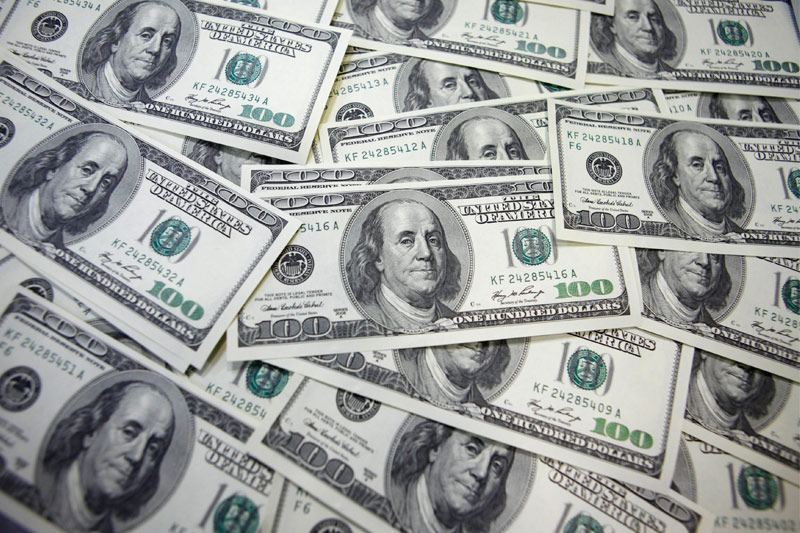Investing.com - The dollar turned mixed against the other major currencies on Tuesday, after the release of higher-than-expected U.S. inflation data and a disappointing manufacturing report from New York.
The dollar was little changed against the euro, with EUR/USD up 0.01% to 1.3823.
In the U.S., official data showed that consumer price inflation rose 0.2% in March, exceeding expectations for a 0.1% gain, after a 0.1% uptick the previous month.
Core consumer price inflation, which excludes food and energy, rose 0.2% last month, more than the expected 0.1% increase, after a 0.1% gain in February.
A separate report showed that the Empire State manufacturing index fell to 1.3 this month, from a reading of 5.6 in March, compared to expectations for a rise to 8.2.
The single currency came under pressure earlier, after data showed that the ZEW index for German economic sentiment fell to an eight-month low of 43.2 this month, from a reading of 46.6 in March. Analysts had expected the index to decline to 45.0 in April.
The pound edged higher against the dollar, with GBP/USD adding 0.07% to 1.6741.
Earlier Tuesday, official data showed that U.K. consumer price inflation rose 0.2% in March, in line with expectations, after a 0.5% increase the previous month.
On a yearly basis, U.K. CPI rose 1.6% last month, in line with market expectations, after a 1.7% gain in February.
The dollar was lower against the yen , with USD/JPY falling 0.14% to 101.70 and steady against the Swiss franc, with USD/CHF easing 0.06% to 0.8793.
In Switzerland, official data showed that producer price inflation was flat in March, confounding expectations for a 0.1% slip, after a 0.4% decline in February.
The greenback was higher against the Australian, New Zealand and Canadian dollars, with AUD/USD sliding 0.73% to 0.9352, NZD/USD declining 0.51% to 0.8644 and USD/CAD adding 0.17% to 1.0980.
Data showed that manufacturing sales in Canada increased by 1.4% in February, exceeding expectations for a 1% rise. Manufacturing sales in January were revised down to a 0.8% gain from a previously estimated 1.5% advance.
The Aussie came under pressure after the minutes of the Reserve Bank of Australia's April policy meeting showed that the bank is likely to keep interest rates at record lows for an extended period of time, seeing as low borrowing costs are helping boost domestic growth.
The US Dollar Index, which tracks the performance of the greenback versus a basket of six other major currencies, was down 0.05% to 79.78.
